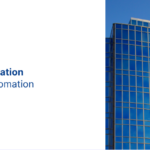Entrepreneurs whose tax year coincides with the calendar year have only a few days left to settle CIT for 2023 (Tuesday, April 2, is the last day to submit the CIT-8 or CIT-8AB return). There will be no rescheduling this year. However, as in the previous year, doubts regarding innovative relief remained unresolved. Therefore, interest in reliefs may be low also in this year’s returns. Companies still do not know the answers to many questions regarding tax reliefs, such as research and development relief, IP Box and robotization relief.
IP Box
There is still a problem with the application of the IP Box relief, which involves applying a 5% tax rate on income from qualified intellectual property rights (IP). This includes: rights from patents, rights of protection for inventions, utility models, rights from registration of industrial designs, and even copyrights to computer programs.
Taxpayers are still waiting for the second part of the explanations regarding the IP Box relief. The first part was released in July 2019 and dealt with quite clear situations. However, it lacked instructions on how to calculate income from qualified IP contained in goods and services. To calculate this value, transfer pricing regulations should be applied accordingly, which is why the Transfer Pricing Forum was supposed to deal with it. The Ministry of Finance announced then that the second part would be released in autumn 2019, but this did not happen.
In the IT industry, the matter is easier because the created computer program is, in principle, entirely qualified IP. Therefore, the income from its sale may be fully taxed at a rate of 5%. However, in relation to other products, IP income should be calculated in the proportion in which qualified IP is included in the sales price of the good or service. The lack of explanations causes many entrepreneurs to give up the relief for fear of disputes.
R&D
Despite the general interpretation of the Minister of Finance of 13 February 2024 (no. DD8.8203.1.2021), there are still doubts as to how to settle employee costs under the relief for research and development activities. It is true that the Minister of Finance confirmed that the R&D relief also covers remuneration for the period of justified absence from work, but at the same time he commented unfavorably on companies regarding the proportion according to which this cost can be deducted.
It is worth mentioning that, as a rule, the basis (which also includes remuneration for the time of justified absence) should be proportional to the total working time of a given person.
For robotization
Problems also concern the tax relief for robotization. The regulations state that a taxpayer may deduct from the tax base “an amount constituting 50 percent” tax-deductible costs incurred in the tax year for robotization” (Article 15(6) of the CIT Act and Article 22(8) of the PIT Act). This deduction applies “to tax deductible costs incurred for robotization from the beginning of the tax year that started in 2022 until the end of the tax year that started in 2026.” This means – according to the director of KIS – that the relief can only be used by making depreciation write-offs, because the cost of obtaining revenues are write-offs for the consumption of fixed assets.
Such a treatment is beneficial for companies that bought a new industrial robot before 2022 but continue to depreciate it. However, it is unfavorable for taxpayers who bought a new robot in 2022 or subsequent years, because they may not be able to deduct half of the robot’s value by 2026 (as part of depreciation). For example, if a company buys a robot only in December 2025, it will be able to deduct only a small part of the tax cost of its acquisition as a relief.
























